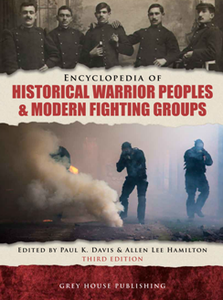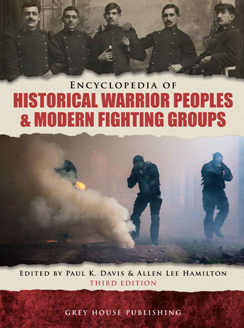Encyclopedia of Historical Warrior Peoples & Modern
Fighting Groups, Third Edition
by Paul K. Davis and Allen Lee Hamilton
English | 2016 | ISBN: 1682170985 | 682 Pages | PDF | 9.74 MB
Fighting Groups, Third Edition
by Paul K. Davis and Allen Lee Hamilton
English | 2016 | ISBN: 1682170985 | 682 Pages | PDF | 9.74 MB
Ever since mankind began organizing military forces, some have excelled in their craft. This came about either by fortuitous circumstances, outstanding leadership, or specialized instruction or training. In some cases, entire societies were geared toward military excellence. It is these populations and units that are the focus of this work.
We have selected four criteria for inclusion in this book: (1) Populations that dedicated themselves to a military structure in order to maintain societal discipline or dominate their neighbors. For example, the Spartans of ancient Greece or the Zulus of nineteenth-century Africa fit this criterion. (2) Soldiers who, through specialized training in the use of particular weapons or fighting styles, dominated the military forces of their times. Under this definition we would include knights, who controlled the military and social structure of medieval Europe, or submariners, who in modern times are carefully selected for their physical and psychological characteristics in operating undersea craft. (3) Units that did not necessarily set out to be noteworthy but who, through leadership or circumstance, made themselves famous. Here we include units such as the Minutemen of the American Revolution and Merrill's Marauders of World War II. (4) Units that recruit only high-quality soldiers with the intent of creating an elite force. The Varangian Guard of the Byzantine Empire and the Special Air Service of modern Great Britain fit into this category.
Some units that are well known are mentioned as subgroups of other topics. The famous Black Watch regiment of the British Army, for example, is included in the Highlanders entry. In some cases we have expanded entries, such as in adding notable subgroups to existing articles, like the warrior American Indian tribes. We have also updated a number of articles to reflect actions in which they have been engaged since the previous edition.



